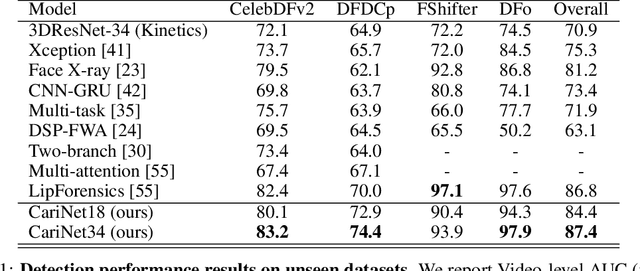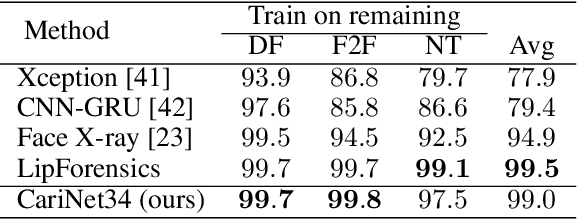Deepfake Caricatures: Amplifying attention to artifacts increases deepfake detection by humans and machines
Paper and Code
Jun 02, 2022



Deepfakes pose a serious threat to our digital society by fueling the spread of misinformation. It is essential to develop techniques that both detect them, and effectively alert the human user to their presence. Here, we introduce a novel deepfake detection framework that meets both of these needs. Our approach learns to generate attention maps of video artifacts, semi-supervised on human annotations. These maps make two contributions. First, they improve the accuracy and generalizability of a deepfake classifier, demonstrated across several deepfake detection datasets. Second, they allow us to generate an intuitive signal for the human user, in the form of "Deepfake Caricatures": transformations of the original deepfake video where attended artifacts are exacerbated to improve human recognition. Our approach, based on a mixture of human and artificial supervision, aims to further the development of countermeasures against fake visual content, and grants humans the ability to make their own judgment when presented with dubious visual media.
 Add to Chrome
Add to Chrome Add to Firefox
Add to Firefox Add to Edge
Add to Edge